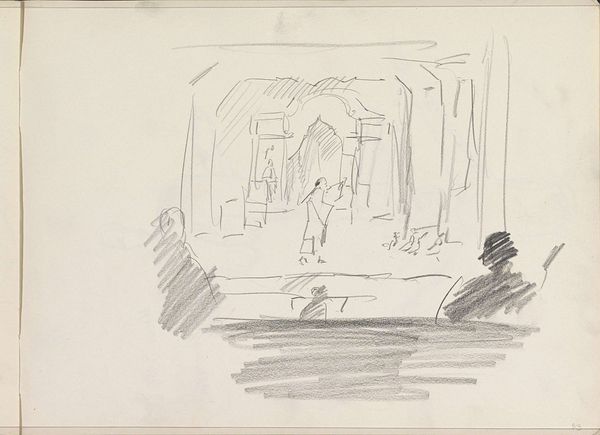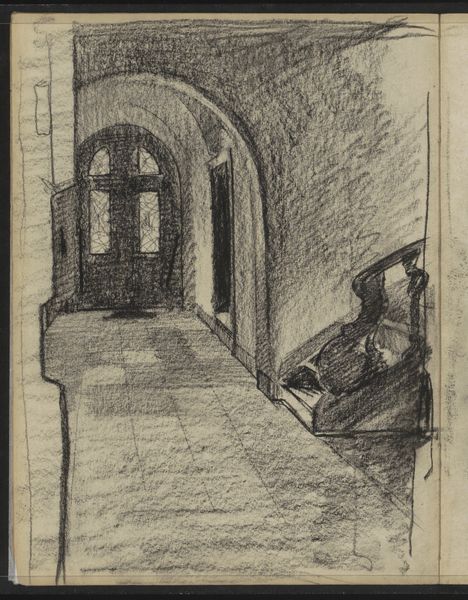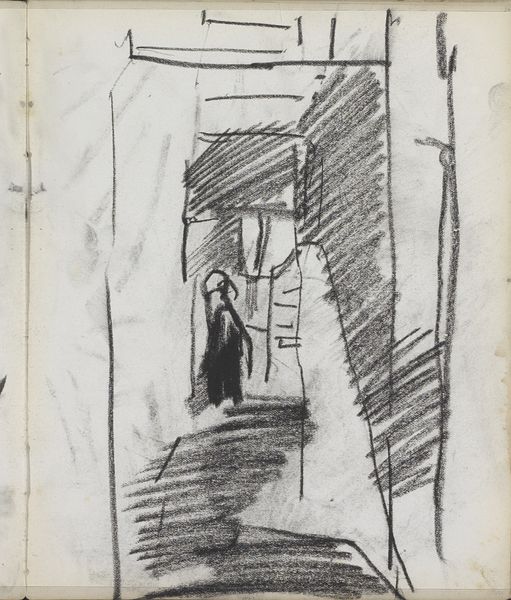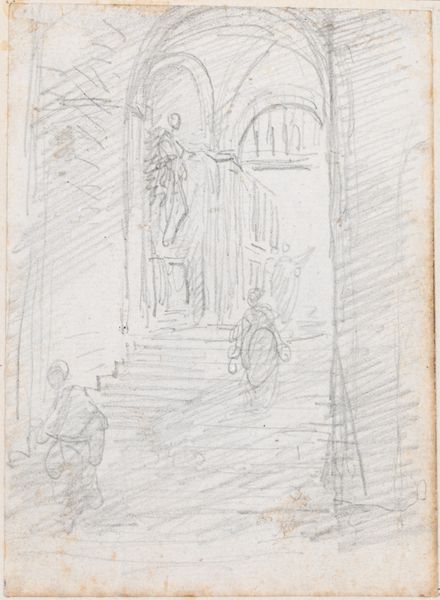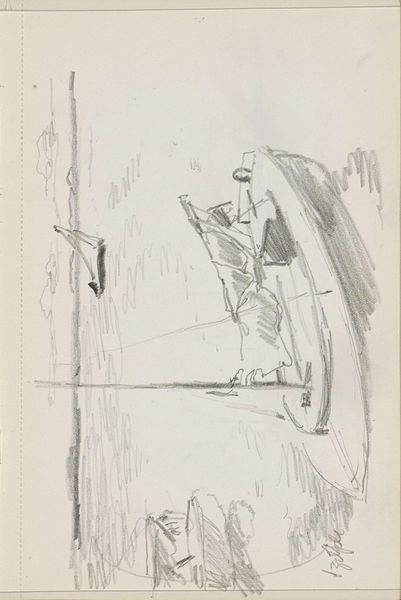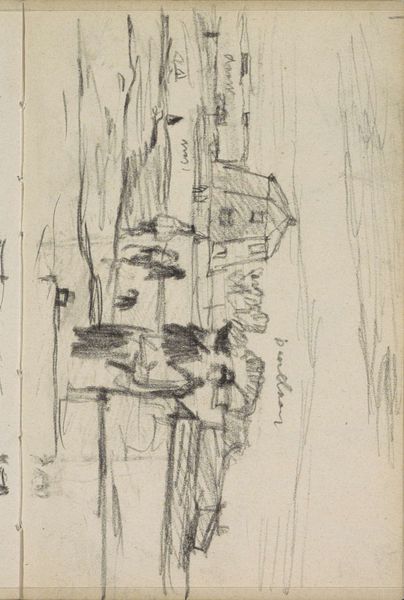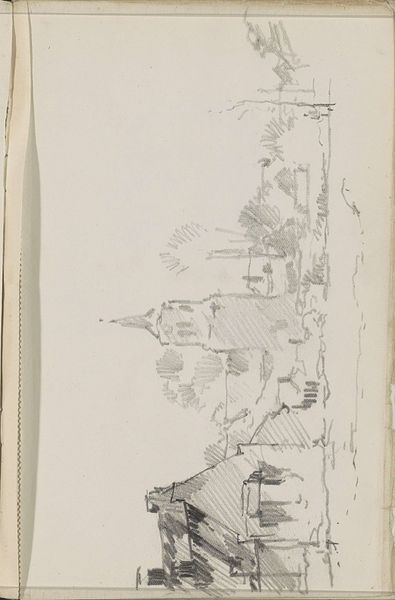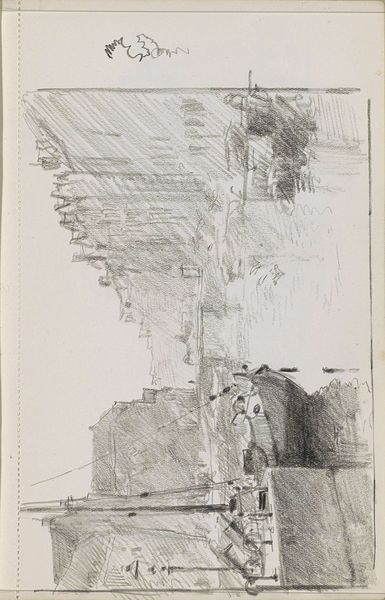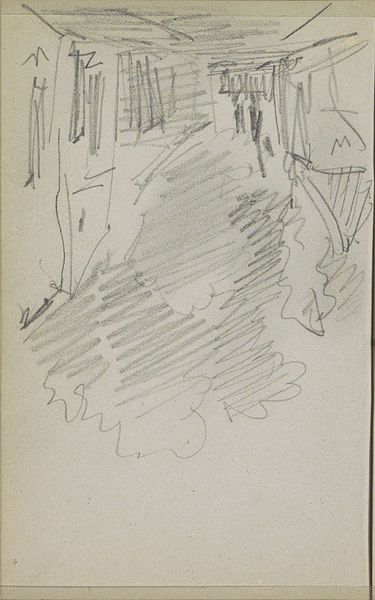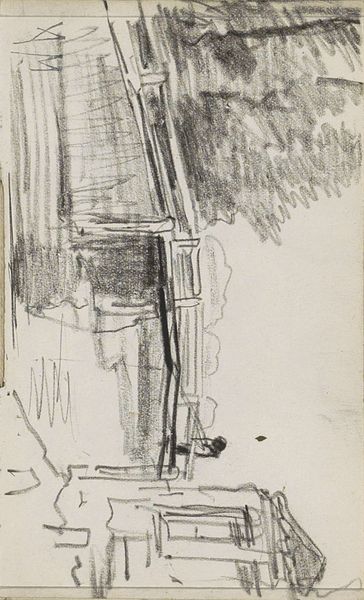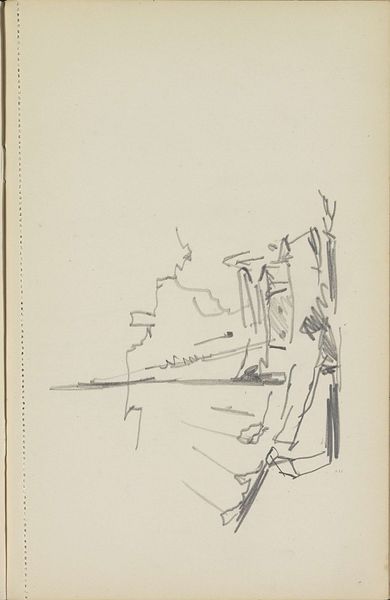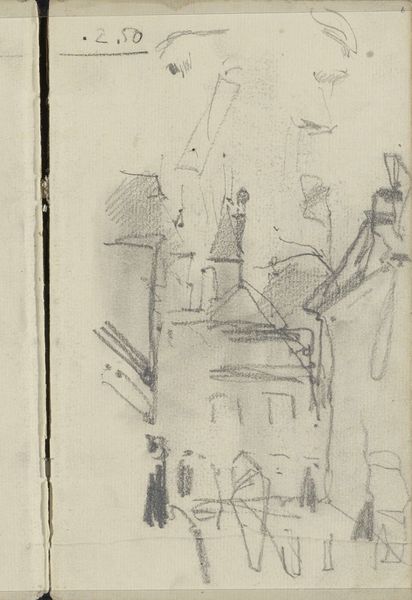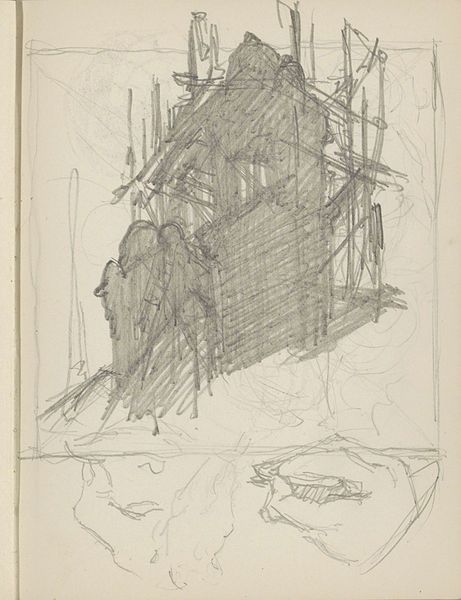
drawing, pencil
#
drawing
#
street-art
#
landscape
#
pencil
#
cityscape
#
realism
#
building
Copyright: Rijks Museum: Open Domain
Editor: This pencil drawing, "Straat gezien door een poort," or "Street Seen Through a Gate," by Cornelis Vreedenburgh, was created around 1935 or 1936. It has a sketch-like quality and, for me, it creates a feeling of looking back into history through the archway, almost like looking through a viewfinder. What story does this cityscape tell you? Curator: That’s a great initial observation. It makes me think about the tradition of the picturesque in Dutch art and its role in constructing national identity. How does this drawing engage with or perhaps deviate from that tradition, especially during the interwar period? Is Vreedenburgh presenting a romanticized view, or something more grounded in the everyday reality of that time? Editor: I hadn’t considered that! So, you're thinking about how Vreedenburgh’s choices reflect broader social and cultural trends? Does the almost stark realism relate to the changing times? Curator: Precisely. Realism gained prominence in the 20th century. Think about how urbanization was dramatically changing the Dutch landscape, so artworks reflecting these changes would be received. This perspective—the “street seen through a gate”—frames our understanding, creating a clear hierarchy: inside versus outside, perhaps stability versus change. What purpose might these contrasting framing devices serve for the artist? Editor: Maybe it represents the artist reflecting on the past, literally framed by it, but still facing forward. Like the artist is deciding where to situate themselves and their viewers between these spaces and within these complex socio-historical processes. Curator: Exactly! Considering art as a public-facing conversation between the past, present and future reveals a lot about the context it was made in and the dialogue it encourages! Editor: This makes me see the artwork in a completely different light now. It’s so much more than just a pretty drawing. Curator: Indeed, every work of art is intertwined with the history and forces that helped produce it, if only we take the time to consider those contexts.
Comments
No comments
Be the first to comment and join the conversation on the ultimate creative platform.
